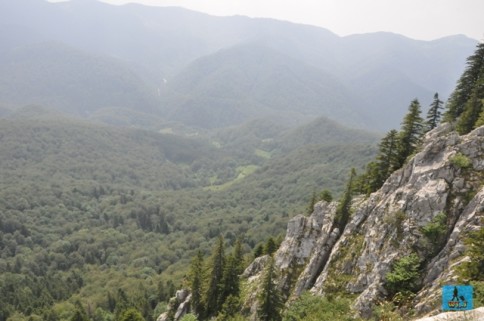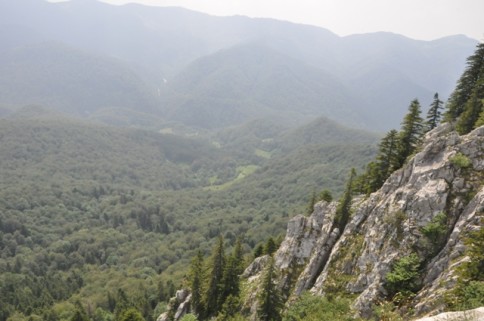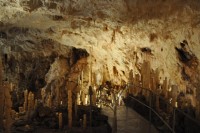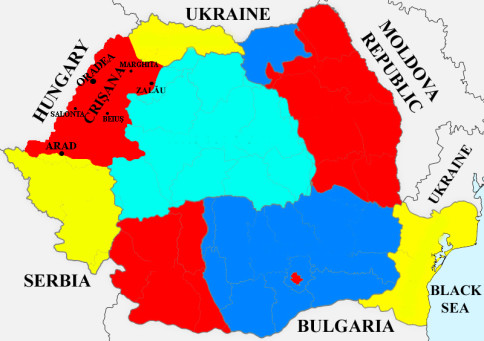Crisana Region

Location:
Crisana region from Romania is situated in the north-west part of the country and the neighbor regions are: Maramureș in north, Transylvania in east and Banat in south. In the west part is the border with Hungary.
Area/Surface:
19.162 km² (approximately, also a small part of Satu Mare County being added)
Population:
1.230.000 people
The biggest cities:
Oradea, Arad, Zalău, Beiuș, Marghita and Salonta.
Religion:
Orthodox
The component counties:
And a small part of Satu Mare County.
Crisana Region
History:
Crisana region has also its own history since ancient times, famous for its presence since the Middle Ages. But the first documents of its history appear only at the end of the 9th century when it’s been talked about Biharia Citadel as the capital and center of this area. Over the centuries here were held battles between Hungarians and Romanians for these territories and for a long time they were under Austro-Hungarian rule. But by the time of the Great Union of the principalities of Romania, Crisana is attached to the other provinces. To be mentioned the fact that Crisana region extends its boundaries in Hungary where cities like Debrecen, Gyula and Békéscsaba, are part of Hungarian Crisana.
Relief of Crisana region:
Crisana‘s relief is various and spectacular especially in the mountain area, where is a karst relief with the most beautiful formations, from wonderful caves, keys and gorges to deep valleys and solitary rocks. In the east part of the region are the Apuseni Mountains with the highest altitude in Bihor Peak of 1.849 m height and the beautiful Hills of Silvania. To the west, the altitude decreases and appear the plain areas and the extended grasslands where the locals cultivate their own land since long ago.
Climate, rivers and lakes:
Crisana‘s climate is beautiful for the most part of the year, temperate-continental but with influences coming from the Atlantic Ocean that bring a slightly humid air. Summers are warm and long with temperatures that often exceed 30° C and winters in the last decades are milder and shorter, although rarely the temperature can drop very much under 0° C. Called Crisana, this region is crossed by Crisul Repede (Fast), Crisul Alb (White) and Crisul Negru (Black) Rivers, but also by rivers like Mures, Barcau or Crasna (Tisa in Hungary). There are several big lakes in the area, many of them perfect for fishing enthusiasts. Among these are Cefa, Lesu, Ineu, Seleus or Petea Lakes.
Tourism:
From the tourism point of view, the most important aspect of Crisana region is represented by the presence of the geothermal waters that have a special effect for the body. Due to these waters, during time were created resorts for relaxation, rest and treatment as those from Baile Felix and Baile 1 Mai where are also lakes with water lilies and lotus flowers and here, tens of thousands of people are coming annually to treat their disabilities or simply to take a bath in the warm water swimming pools of over 35° C, even in winter.
In Crisana like in many other areas of Romania, the time seems that never moved. Tourists can often see people who mow the grass, who then majestically arrange it forming haystacks, people who cultivate the land or they can see carts pulled by oxen and horses, an usual thing in this area, but maybe totally unusual in many other areas and countries of the world. (Find more journeys on blog.worldlifetimejourneys.com) Passing the large fields and farmlands, the mountain area seems to be another world.
Tourist attractions and objectives:
The most important tourist attractions and objectives from Crisana are here: Pestera Ursilor (Bears Cave), Pestera Piatra Altarului (The Altar Stone Cave), Pestera Vantului (The Wind Cave), Pestera Meziad (Meziad Cave), the cave with crystals from Farcu, Pestera Magura (Magura Cave), Pestera Coliboaia (Coliboaia Cave) or Pestera Ghetarul Focul Viu (Alive Fire Glacier Cave), Apuseni Mountains National Park with the Lost World from Padis, the winter resorts from Boga or Stana de Vale, Cuciulat Cave with cave paintings or Galgau Kites Garden.
As an extra, don’t miss the multitude of hiking trails with various degrees of difficulty, as well as citadels and castles like Siria, Soimos, Biharia, Porolissum, Buciumi or Bathory are added. Jibou’s Botanical Garden, as well as the largest and most beautiful cities of the region, Oradea and Arad, each with its own attractions. Hiking lovers who choose to hike these wonderful lands, will have some wild adventures and they will see along the way, various and spectacular waterfalls, caves, gorges or rock formations of different sizes. Visit Crisana region!
 Spectacular view from Piatra Galbenă (Yellow Rock),
Spectacular view from Piatra Galbenă (Yellow Rock),
Apuseni Mountains National Park, Crisana Region
![]() Caras Severin County
Caras Severin County
![]() Timis County
Timis County
Crisana Region
![]() Arad County
Arad County
![]() Bihor County
Bihor County
![]() Salaj County
Salaj County
![]() Constanta County
Constanta County
![]() Tulcea County
Tulcea County
![]() Maramures County
Maramures County
![]() Satu Mare County
Satu Mare County
![]() Bacau County
Bacau County
![]() Botosani County
Botosani County
![]() Galati County
Galati County
![]() Iasi County
Iasi County
![]() Neamt County
Neamt County
![]() Vaslui County
Vaslui County
![]() Vrancea County
Vrancea County
![]() Arges County
Arges County
![]() Braila County
Braila County
![]() Buzau County
Buzau County
![]() Calarasi County
Calarasi County
![]() Dambovita County
Dambovita County
![]() Giurgiu County
Giurgiu County
![]() Ialomita County
Ialomita County
![]() Ilfov County
Ilfov County
![]() Prahova County
Prahova County
![]() Teleorman County
Teleorman County
![]() Dolj County
Dolj County
![]() Gorj County
Gorj County
![]() Mehedinti County
Mehedinti County
![]() Olt County
Olt County
![]() Valcea County
Valcea County
![]() Alba County
Alba County
![]() Bistrita Nasaud County
Bistrita Nasaud County
![]() Brasov County
Brasov County
![]() Cluj County
Cluj County
![]() Covasna County
Covasna County
![]() Harghita County
Harghita County
![]() Hunedoara County
Hunedoara County
![]() Mures County
Mures County
![]() Sibiu County
Sibiu County





